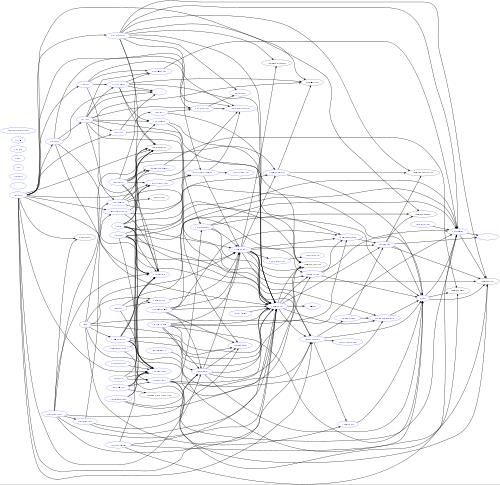 TDD as if you Meant it
TDD as if you Meant itSeveral years ago Keith Braithwaite noticed that many developers use some kind of pseudo-TDD by thinking of a solution and creating classes and functions that they just know they need to implement it. Then their tests keep failing and much time is spent debugging. But instead they should just follow Kent Beck's original procedure of adding a little test, seeing it fail and making it pass by some small change. To help developers practise these original principles Keith defined TDDaiymi as an exercise to really do TDD. The exercise uses a very strict interpretation of the practice of TDD, avoiding design up front and helping people getting used to emergent design by refactoring. It is a difficult exercise and I still remember the first time I did it in a session run by Keith himself. For almost two hours my pair and I were struggling to create something useful. While TDDaiymi is a bit extreme, some people believe it to be the next step after TDD. German "Think Tank" Ralf Westphal even claims that following TDD as if you Meant it is the only way that TDD can give you good design results.
No naked primitives
No naked primitives is another nice constraint. All primitive values, e.g. booleans, numbers or strings need to be wrapped and must not be visible at object boundaries. Arrays, all kinds of containers like lists or hash-tables and even Object (the root class of the language's class hierarchy) are considered primitive as well. Similar to Keith's TDDaiymi this rule is designed to exercise our object orientation skills. A string representing a name is an under-engineered design because many strings are no valid names. In an object oriented system we would like to represent the concept of a name with a Name class. Usually Value Objects are used for this purpose. Also a list of shopping items is not a shopping basket. A general purposes list implementation offers operations that do not make sense for a shopping basket. So containers need to be encapsulated. While it is exaggerated to wrap all primitives (see Primitive obsession obsession), I have seen too many cases of Primitive Obsessions that I rather see a few additional value objects than another map holding maps holding strings. (To avoid that I created a custom PMD rule PrimitiveObsession that flags all primitives in public signatures of Java classes.)
 No IFs
No IFsNo IFs is a great constraint of the Missing Feature catalogue. All conditionals like
if, while, switch and the ternary operator (e.g. _ ? _ : _) are forbidden. Like No naked primitives this is exaggerated but many code bases are full of abysmal-deeply nesting, like the PHP Streetfighter. This has been recognised as a problem and there are campaigns to reduce the usage of ifs. After all, excessive usage of if and switch statements is a code smell and can be replaced by polymorphism and other structures. In order to practice the constraint is taken to the extreme. I have seen many developers struggle with the missing concept in the beginning, but after some thought each and everyone of them found a way to express his or her concepts in another, less nested way.Combining Constraints
Some constraints like TDDaiymi are already difficult on their own, but obeying several of them at the same time is hard. We stick to our (coding-) habits even if we planned to do otherwise. While working the experiments Martin an I would notice a constraint violation only after several times switching roles, several minutes after introducing the "forbidden" concept. This is especially true for conditionals because they are most fundamental to our (imperative styled) coding. It seems that tool support for constraints would help, but not all constraints can be enforced automatically and definitely not for all programming languages.
Refactoring Towards Constraints
It is difficult to find solutions with constraints - after all that is one of their primary purposes - so we decided to first make it green and then refactor towards the constraint. This seems natural as TDD itself has a similar rule: After creating the next failing test (red phase), try to get it green as fast as possible, creating dirty code and duplication as needed (green phase). Then clean up the mess relying on the safety net of the already existing tests (refactor phase). This results in more refactoring than usual, and we spent more than half of the time refactoring. As TDDaiymi puts much more focus on the refactoring step, this might have been due to the first constraint alone. 50-50 for a code kata with a refactoring focused constraints is not much, given that some people report three refactoring commits per one feature commit in their production code.
 Designing Up Front?
Designing Up Front?When refactoring towards the constraint, it is often hard to change the current ("green") solution because it is rooted on primitive data types or conditionals or whatever violates the constraints. Sometimes we had no clue how to refactor and left the violation in the code for several red-green-refactor cycles until it became clear how to proceed. Being hard is not a problem because this is an exercise after all but allowing violations for extended periods of time made me unhappy as the code was not completely clean regarding our standards after each cycle. Also the code looked weird but some constraints are weird and therefore force odd solutions. In following TDDaiymi we did not think about any design up front, but maybe we should have done so. Thinking about structures (i.e. design) that support the constraint, e.g. the absence of conditionals, greatly helps the code and such "designed" solutions look much better. While we should think about the problem, the technology-agnostic solution and its acceptance criteria (test cases) before starting to write code, classic TDD discourages creating a design up front, and TDDaiymi does even more so. I guess more practise is needed to resolve this issue.
Evolving Structures
Another, more direct contradiction is the combination of TDDaiymi and No naked primitives. While following the former constraint, we want to avoid premature design decisions and sometimes use
Object as a place-holder for a concept as long as there is no structure yet. Maybe this can be avoided but I do not know how. (If you know how to TDDaiymi without plain objects, I am more than happy to pair with you on some exercises.) In the end, when the design is finished, the Object has been replaced, but as the final structure evolves late, it may stick around for some time. On the other hand Object is a primitive and therefore forbidden. Maybe it is special and should not count as primitive. I have never seen any under-engineered code base using plain objects, on the contrary they usually contain lots of strings with the occasional boolean or number, but no naked Object. So I believe it is safe to allow Object as primitive because it will be replaced eventually.Conclusion
When I started to write this article I thought its conclusion would be that some coding constraints are just not compatible. As constraints are exaggerated principles, this would be no surprise. But now, after
Credits
Thanks to Martin Klose for the countless hours of pairing and discussing these constraints with me.








